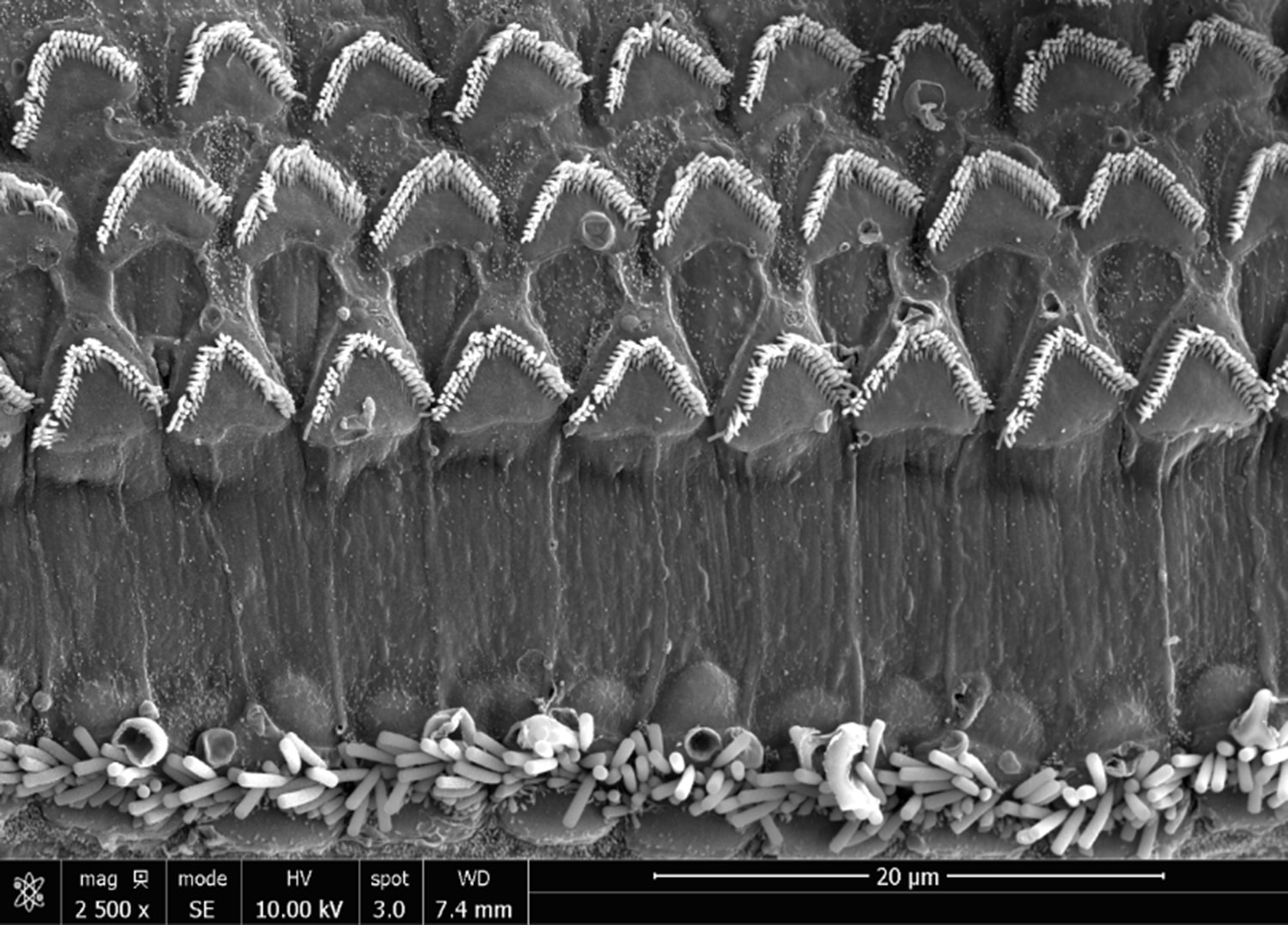
Two to three of every 1,000 children in the United States are born with hearing loss in one or both ears. About half of these cases are genetic.
In a recent study, scientists in the Perelman School of Medicine at the University of Pennsylvania have discovered a gene called GAS2 plays a vital role in normal hearing. The absence of GAS2 causes severe hearing loss.
The protein encoded by GAS2 is pivotal for maintaining the structural stiffness of support cells in the inward ear that regularly help intensify approaching sound waves. They showed that inner ear support cells lacking functional GAS2 lose their amplifier capacities, causing severe hearing impairment in mice.
A few years ago, scientists discovered Gas2 is turned on in embryos by another gene known to be critical for inner ear development. To determine Gas2’s role in that development, the team developed a line of mice in which the gene had been knocked out of the genome and called them Gas2-knockout mice.
It was puzzling to observe that the Gas2-knockout mice had inner ears with cells and structures that seemed quite normal. However, when tested, the animals turned out to be severely hearing-impaired, with deficits at high sound frequencies of up to 50 decibels—equivalent to a loss of 99.999 percent of the normal acoustic energy.
Scientists found that Gas2 is normally active within inner-ear support cells called pillar cells and Deiters’ cells. In these cells, the protein encoded by the gene sticks to microtubules that bundles and stabilizes them, effectively stiffening the cells.
When there is the absence of Gas2 in pillar cells and Deiters’ cells, their microtubule bundles tend to come apart and reduce the cells’ stiffness.
That ends up having dire implications for hearing. The pillar cells and Dieters’ cells within the inner ear form the basic structure of the cochlea. They also act as physical supports for outer hair cells.
The movement of outer hair cells depends on incoming acoustic vibrations responsible for the amplification of that sound energy. The absence of Gas2 causing the loss of stiffness in pillar and Deiters’ cells degrades the sound-amplifying properties of the outer hair cells they support.
Study senior author Douglas J. Epstein, Ph.D., professor of genetics at Penn Medicine, said, “We observed that some of Deiters’ cells in the Gas2-knockout mice even buckled under the tension of the rapid movements of the outer hair cells.”
Scientists imaged propagating sound waves in the inner ears of live Gas2-knockout and normal mice for the experiments.
The study established that GAS2 is a hearing loss gene in humans.
Epstein said, “The prevalence of hearing loss in people due to GAS2 mutations remains to be determined but, this type of congenital hearing loss is nevertheless an attractive target for a future gene therapy.”
“In many genetic hearing loss conditions, the affected cells are permanently damaged or die, but in this one, the affected cells are intact and conceivably could be restored to normal or near-normal by restoring GAS2 function.”
“Such a gene therapy might be useful not only in more obvious cases of hearing loss in early childhood, but also in cases—perhaps more numerous—in which inherited mutations lead to a slower development of hearing loss in adulthood.”
Journal Reference:
- Tingfang Chen et al. Cochlear supporting cells require GAS2 for cytoskeletal architecture and hearing. DOI: 10.1016/j.devcel.2021.04.017
Continue reading Absence of this gene causes severe hearing loss on Tech Explorist.
0 comments:
Post a Comment